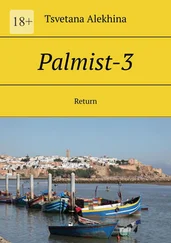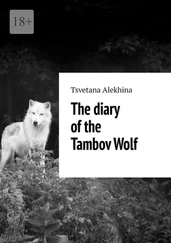Tsvetana Alеkhina - Choosing religion you choose fate
Здесь есть возможность читать онлайн «Tsvetana Alеkhina - Choosing religion you choose fate» — ознакомительный отрывок электронной книги совершенно бесплатно, а после прочтения отрывка купить полную версию. В некоторых случаях можно слушать аудио, скачать через торрент в формате fb2 и присутствует краткое содержание. ISBN: , Жанр: Религиозная литература, на английском языке. Описание произведения, (предисловие) а так же отзывы посетителей доступны на портале библиотеки ЛибКат.
- Название:Choosing religion you choose fate
- Автор:
- Жанр:
- Год:неизвестен
- ISBN:9785005596529
- Рейтинг книги:4 / 5. Голосов: 1
-
Избранное:Добавить в избранное
- Отзывы:
-
Ваша оценка:
- 80
- 1
- 2
- 3
- 4
- 5
Choosing religion you choose fate: краткое содержание, описание и аннотация
Предлагаем к чтению аннотацию, описание, краткое содержание или предисловие (зависит от того, что написал сам автор книги «Choosing religion you choose fate»). Если вы не нашли необходимую информацию о книге — напишите в комментариях, мы постараемся отыскать её.
Choosing religion you choose fate — читать онлайн ознакомительный отрывок
Ниже представлен текст книги, разбитый по страницам. Система сохранения места последней прочитанной страницы, позволяет с удобством читать онлайн бесплатно книгу «Choosing religion you choose fate», без необходимости каждый раз заново искать на чём Вы остановились. Поставьте закладку, и сможете в любой момент перейти на страницу, на которой закончили чтение.
Интервал:
Закладка:
The Western Slavs are Pomorians, Obodrichs, Vagras, Polabs, Smolinians, Glinians, Lyutichs, Velets, Ratari, Drevans, Ruyans, Luzhichans, Czechs, Slovaks, Koshubians, Slovenes, Moravians, and Poles. Military actions on the part of the Germans forced them to leave their lands and retreat to the east.
The Southern Slavs adopted Christianity before anyone else because they lived close to Byzantium. The South Slavs included Slovenes, Croats, Serbs, Zahlumlans, and Bulgarians. These Slavic peoples settled the lands after predatory raids; they had to experience the strong influence of the Byzantine Empire. Later, some of them mixed with the Turkic-speaking Bulgarians, they gave rise to the Bulgarian kingdom, the predecessor of modern Bulgaria.
What the Slavs had in common was the similarity of the language and the cohesion of the association. The basis of the language was precisely the Gothic ethnosubtract. Linguistically, these are Lusatians, Poles, Litvins-Belarusians, Czechs, Slovaks, Macedonians, Croats, Slovenes, Bosnians, Montenegrins, Serbs, Bulgarians, Rusyns-Ukrainians and Russified Finno-Ugrians. Slavic languages belong to the Indo-European language family.
Slavic tribes began to develop new territories in the 6th-8th centuries. The tribes diverged in three main directions: the southern – the Balkan Peninsula, the western – between the Oder and the Elbe, to the east and northeast of Europe. Many Slavic tribes inhabited the eastern part of Russia. The Eastern Slavs remained on this land and gradually became the main inhabitants of the territory. In Russia, the ancient Slavic tribes were engaged in agriculture, beekeeping, fishing, and were also hunters and shepherds. The Slavs withstood the attacks of the Huns from Central Asia in the 3rd and 4th centuries, as well as the invasions of the Goths from Germany and Sweden. By about 600, the Slavs had become the dominant ethnic group on the Eastern European Plain. By the 7th century, they had established villages along all the major rivers of what is now eastern Russia. In the early middle Ages, the Slavs lived between the Viking kingdoms in Scandinavia, the Holy Roman Empire in Germany, the Byzantines in Turkey and the Mongol and Turkish tribes in Central Asia. The most common version is that the roots of the Slavs go to the lands adjacent to the Danube, and then scattered across Central, Southern and Eastern Europe. In general, scientists agree with the beginning of the penetration of Indo-European tribes close in lifestyle, rituals and language into the center of Europe in the 3rd millennium BC.
The Slavs, as an already established ethnic group, originally appeared in the area of the Laba River (Elbe), their language was mixed with Baltic and Gothic, which gave a peculiarity to their communication. Some Russian historians believe that the Slavs themselves are a mixture of Goths and Balts from the territory of Belarus (that is, Belarusians Gutov-Gepids) and, possibly, Poland. The formation of the Slavs took place in this campaign, in which Iranian-speaking Alans or Sarmatians took part, also possibly a composite group. It is believed that the real Slavs in origin and genetic terms are the Slavs who settled the territories of the present northern Germany (Obodrites, Rusyns, etc.), the Czech Republic and Southern Poland (Lyakhs). The rest of the group are not Slavs, they are considered «Slavs» only because they adopted the language from the Slavs who captured them. Close in location in genetics and anthropology to the Slavs are the Western Balts, Belarusians and Mazurs. Not all other Slavs are Slavs, there is nothing in common between them except the language, Russians, who, being Finno-Ugrians and Turks, are not even Indo-Europeans. Slavic princes and similar Sarmatian Bulgarians who came to us from the Volga are not the «Slavic Slavs». The only language as close as possible to Slavic is Bulgarian (the rest are synthetic). This shows that the Bulgarians have not completed the transition to the Slavic language. This is confirmed in the Novgorod expedition of academician Valentin Yanin in the Novgorod letters: in the analytical Slavic language, the local Sami, whom did the Rurik’s Obodrites colonize. Only after 250 years, the Sami Obodrites began to be called «Slovenes» and the language of the birch bark letters of the Sami was recognized as synthetic Slavic, this is written in the «Tale of Bygone Years». The Slavs have always been a warlike nation, it was the main ethnic force of the Varangians, mainly Polabians, Czechs and Lyakhs. The Slavs of Polabia invented the institute of chivalry. Thanks to their military and knightly art, they managed to subdue vast territories of Central and Eastern Europe, thanks to this, the locals mastered the Slavic language.
The Slavs were the most sought-after commodity in the slave trade as they were the most numerous people in Europe. There was a time when Slavs – slaves supplied to Constantinople were numerous. The most correct version lies in the correct and balanced analysis of the name of our people, resorting to which it can be understood that the Slavs are a community united by one common religion: paganism, who glorified their gods with words that could not only pronounce, but also write! The Slavs brought glory to their gods, and glorifying them, glorifying their deeds, they united into a single Slavic civilization, a cultural link of pan-European culture.
Being the largest nation in all of Europe, scientists still cannot determine the exact origin of the Slavic people. Some suggest that their origin began from the Aryans and Germans. Some put forward a version about the ancient Celtic origin of the Slavs. Today, the culture of the Slavs unites many countries and peoples, the Slavic people occupy a huge territory in terms of their number. Now, the Slavs are an Indo-European people who, despite the difference in mentality, nationality and versatility, actively participates in the development of history.
The Holy Book of the Slavs is the book of Veles. The Book of Veles is an ancient Slavic monument that has survived to the present day. It is a symbol of the Old Slavic script of the 9th century AD. This book tablet is one of the official proofs that paganism existed in Russia. Slavic magi carved this book on wooden tablets. The old dilapidated tablets describe the history of Ancient Russia from 650 BC to a quarter of the 9th century. The book of Veles itself was simply called a book, because in the chronicle it there is its name – a book. Perhaps the god Veles was mentioned or simply revered at that time. And the book was called the book of Veles.
The book of Veles has the second name of Ploshchechkin’s hut. Pagans especially revere this book as the main material proof of the existence of their religion. The first publication of the text took place in 1950 in the city of San Francisco. The text was published thanks to two Russian emigrants Yu. P. Mirolyubov and Al. Kurom (A. A. Kurenkov). The falsification of this book appeared in the 19th century, in order to primitively imitate the Proto-Slavic language. Yu. P. Mirolyubov himself is considered a forger of the book, and the whole story of the appearance of Veles’ book belongs to him. According to him, the text was copied from wooden tablets lost during the war. These tablets may contain information about the ancient Slavic history from about the 7th century BC to the 9th century AD, as well as legends and prayers. Following his story, the location of the wooden planks occurred in 1919 during the retreat from Moscow. They were found by a Colonel of the Volunteer Army, by the artist Fyodor Arturovich Izenbek, in one «plundered princely estate of the Zadonskys, or Donskys». The location occurred on the floor in the looted library. All the plates were approximately the same size – 38 × 22 cm, half a centimeter thick and had a hole for fastening with a belt. The tablets were scratched with incomprehensible writing; the text was scratched with an awl or burned, and then covered with varnish or oil.
Читать дальшеИнтервал:
Закладка:
Похожие книги на «Choosing religion you choose fate»
Представляем Вашему вниманию похожие книги на «Choosing religion you choose fate» списком для выбора. Мы отобрали схожую по названию и смыслу литературу в надежде предоставить читателям больше вариантов отыскать новые, интересные, ещё непрочитанные произведения.
Обсуждение, отзывы о книге «Choosing religion you choose fate» и просто собственные мнения читателей. Оставьте ваши комментарии, напишите, что Вы думаете о произведении, его смысле или главных героях. Укажите что конкретно понравилось, а что нет, и почему Вы так считаете.












